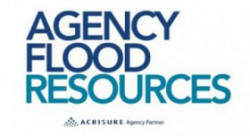While at first glance, April 1, 2016 NFIP changes appear to be minor, they are significant enough for you to take note of them. Upcoming changes bring premium and fee increases, a new rating methodology for both Preferred Risk Policies (PRPs) and Property Newly Mapped Into the SFHA Policies, as well as new communication procedures.
Increase to Premiums and Fees
Beginning April 1, 2016, the total average premium increase for all NFIP policies will be 9%. The actual increase for any individual policy may be higher, based on a number of underwriting criteria. Also, the premium increase percentages do not include the Federal Policy Fee or the new $250 Congressionally-mandated HIFAA surcharge, which are not considered premium and are not subject to the premium rate cap limitations. Premium rate increases for some classes of policies are as follows:
- 25% – Pre-FIRM – All A and V zones – Non-Residential Business Properties, Non-Primary Residences, Severe Repetitive Loss Properties and Substantially Improved Properties.
- 13% – Post-FIRM – Unnumbered A zones – All occupancy types.
- 10% – Post-FIRM – All V zones – All occupancy types.
- 9% – Post-FIRM – A1-A30, AE zones – All occupancy types.
The Reserve Fund Assessment (RFA) will be increasing for the Preferred Risk Policies (PRP) and the Federal Policy Fee (FPF) will be increasing for all policy types.
Revised Rating Methodology For Preferred Risk Policies (PRP) and Property Newly Mapped Into the SFHA Policies
Prior to the Homeowners Flood Insurance Affordability Act (HFIAA), PRP were written on properties located outside of the SFHA and on properties newly mapped into the SFHA. On April 1, 2015, in accordance with HFIAA, all NFIP carriers were required to use a new class of NFIP policies, called Property Newly Mapped Into the SFHA, for all new and renewal policies on properties that were newly mapped into the SFHA.
On April 1, 2016, all NFIP carriers will use a new rating methodology for both of these classes of NFIP policies. The new methodology will utilize base premium rates and a multiplier to calculate premium for each renewal on or after April 1, 2017. While base premium rates on PRP will increase each year, the multiplier will remain 1.0 for subsequent renewals. Base premium rates for Property Newly Mapped Into the SFHA policies will increase each year, plus the multiplier will increase beginning April 1, 2017, based on the year in which the property was newly mapped into the SFHA. This enables NFIP to increase rates for policies for Property Newly Mapped Into the SFHA more than PRPs.
The declarations pages for these two classes of policies will also display more premium information.
Elimination of Subsidy for Certain Pre-FIRM Policies That Lapse and Are Reinstated
Effective April 1, 2016, FEMA will prohibit the use of Pre-FIRM subsidized rates for policies reinstating coverage for Pre-FIRM buildings that were previously insured by the NFIP where the NFIP coverage is reinstated by means of a payment received more than 90 days after expiration or cancellation of the policy.
Initial Implementation of Clear Communications
HFIAA requires that FEMA clearly communicate to the policyholder their full flood risk, regardless of whether their premium rates are full-risk rates. NFIP insurers will have to report current flood zone and current FIRM information including BFE, if applicable, for all new business policies effective on or after April 1, 2016, and for all renewals effective on or after October 1, 2016.
Time to Look for Private Market Alternatives to the NFIP
The Biggert-Waters Act of 2012 calls for private insurers to enter the flood marketplace to provide alternatives to NFIP insurance. Rapidly increasing NFIP rates encourage insurance agents to look for flood insurance alternatives in the private market.
Download FEMA’s Bulletin on the NFIP Program Changes Effective April 1, 2016 (.pdf)

